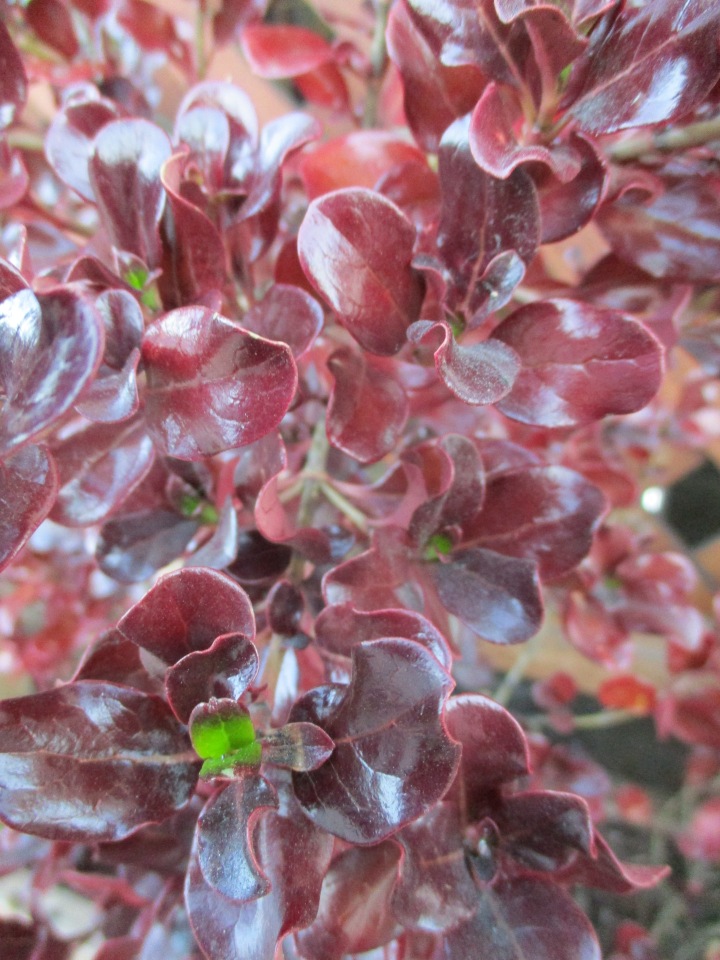 There is no shortage of color for the garden here in our mild climates. If we want to, we can grow various flowers to bloom at various times throughout the year. If that is not enough, we can grow plenty of colorful foliage too. Evergreen sorts can stay fresh and resilient to minor frost all winter. A few deciduous plants and warm season perennials with colorful foliage will refoliate in spring.
There is no shortage of color for the garden here in our mild climates. If we want to, we can grow various flowers to bloom at various times throughout the year. If that is not enough, we can grow plenty of colorful foliage too. Evergreen sorts can stay fresh and resilient to minor frost all winter. A few deciduous plants and warm season perennials with colorful foliage will refoliate in spring.
Besides the various shades and hues of green, foliage can be variegated with white, cream, gray, chartreuse, yellow, gold, red or pink. Such variegation can be stripes, blotches, spots, margins or lacy patterns. New spring growth of some variegated plants is blushed with pink or red. Plants with blue, gray, silvery, bronze or purplish foliage are mostly monochromatic, without variegation.
Just as most popular flowers became less efficient at their primary function of attracting pollinators, as they were bred and developed to be bigger and more colorful than they naturally were, most colorful foliage is not an an advantage to the plants that produce it. After all, foliage needs chlorophyl for photosynthesis. Variegated portions of leaves lack chlorophyl, so are much less efficient.
In fact, many variegated plants originated as mutant growths, known as ‘sports’, that appeared on unvariegated plants, and were cloned. Many try to revert back to green by producing their own unvariegated sports. These green sports grow faster with more chlorophyl, so can overwhelm variegated growth if not pruned out. Monochromatic blue or gray foliage is not mutant growth, but is instead a natural adaptation to extreme exposures, mostly at high elevations, so is not prone to reversion.
English holly, English ivy, euonymous, silverberry, New Zealand flax, mirror plant and various pittosporums are some of the more popular variegated plants. Purple leaf plum, purple smokebush and a few cultivars of Japanese maple are popular plants with purplish or bronze foliage. Blue spruce, American agave, Arizona cypress and various junipers have exquisite bluish or gray foliage.
What IS that pink-leafed plant? I have seen something like it, but not with that sheen…
LikeLiked by 1 person
It illustration at the top of this article is a cultivar of mirror plant, Coprosma X kirkii. I do not know which cultivar it is; and most of the modern cultivars are so extensively hybridized that they are known merely by their genus and cultivar name (without the species designation).
LikeLiked by 1 person
GREAT POST! Everything is covered in snow here right now.
LikeLiked by 1 person
Thank you.
LikeLiked by 1 person
Being a shade nursery ( primarily), we depend heavily on plants with foliage that is attractive both in color and structure. When blooms are scarce this really keeps the gardens interesting. Nice post!
LikeLiked by 1 person
Thank you. That is part of the reason we tried to grow hostas. It did not go well for us.
LikeLike